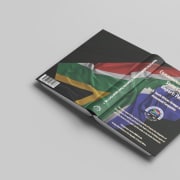|
Getting your Trinity Audio player ready...
|
State capture commission chairperson, Acting Chief Justice Raymond Zondo, cites in his first report the February 2011 transfer of Themba Maseko from the position of CEO of the Government Communication and Information System (GCIS) to the Department of Public Service and Administration as one of the earliest acts of state capture by the Gupta family.
Maseko’s refusal to allow the capture of the GCIS cost him his job, and South Africa “one of the few government officials who was willing to stand up to the pressure exerted by the Gupta family”, Zondo writes. It came at a great cost to the country, and was done irregularly and out of the norm of the executive level of government, on the instruction of former president Jacob Zuma.
“The influence they [Guptas] exerted over former president Zuma was considerable. They managed to ensure that a well-performing and principled public servant was removed at lightning speed when he refused to accede to their demands to divert millions of Rands of public money to enrich their media business.”
Maseko was one of the first witnesses to take the stand before the commission in August 2018, and he told of how, in late 2010, he received a call from Zuma as he was leaving his office for a meeting with Ajay Gupta at his Saxonwold home. Zuma’s brief remarks to him were to the effect that he must “help” the Guptas with the business for which they sought his support. Maseko had until this point ignored Gupta’s advances, having received a number of calls asking for a meeting, but had changed his mind and decided to give him a hearing.
“The idea of that call must have been to convey the message to Mr Maseko that the Guptas enjoyed the support of the highest office in the land so that this could work as pressure on Mr Maseko to co-operate with [the] Guptas, but on the contrary he had agreed to meet with them.”
Gupta wanted to discuss the upcoming entry of his family’s newspaper the New Age into the market, and demanded that the GCIS give him access to its media advertising spend, valued at R600-million per annum at that time, according to Maseko. When he refused, and did the same for similar demands in the future, Maseko was removed from his post. His transfer to another department was announced at a Cabinet meeting in early February the following year, 2011.
Until then, Maseko had only known that he would be removed, having been called to a meeting several days before the Cabinet meeting, by his then direct command and minister in the presidency, the late Collins Chabane. What had not been finalised was where he would be re-deployed and when. On the same day, he also learned that he would be replaced by Mzwanele Manyi, who had until then been the director-general (DG) of the Department of Labour.
“Former President Zuma replaced Mr Maseko with a facilitator, in the form of Mr Mzwanele Manyi. During Mr Manyi’s term as DG of GCIS, millions of Rands were spent on TNA in circumstances where there was no credible readership information nor certified circulation figures for the newspaper. It is inconceivable that this would have been allowed to occur if Mr Maseko had remained at the helm of GCIS,” Zondo notes in the report.
Several months into his appointment at GCIS, Manyi approved around R6-million worth of advertising to the New Age, despite the newspaper not having recorded its readership statistics publicly as is industry policy. In the following year, 2012, the figure rose to over R8-million. Manyi left the GCIS in August 2012.
The commission took the route of investigating whether the correct protocols were followed in Maseko’s removal, his replacement by Manyi, and whether both were indeed on the instruction of Zuma. Evidence before the commission, writes Zondo, is that the correct process to follow in such circumstances is for two memoranda, detailing the transfers of each of the DGs from one department to another, and the acceptance of the DG by the receiving ministers in question. These are tabled before Cabinet for consideration, and form part of the minutes of the meeting that approves the transfer. There were neither memoranda on nor details of the transfer in the minutes on the 2 February 2011 meeting, said Zondo.
This, he said, led him to conclude that Maseko’s version of events – that Chabane told him Zuma had made the instruction while on an overseas trip days before the meeting – was more accurate than Zuma’s. The former president had made a rushed decision to have Maseko removed because he resisted the Guptas’ demands.
“President Zuma was prepared to throw his own comrade in the ANC, Mr Maseko, a well performing civil servant, into the street just because he had refused to be party to a corrupt arrangement sought by the Guptas.”
Several witnesses who had worked with Chabane testified about him revealing that Maseko’s removal was by instruction, although Chabane had never explicitly mentioned Zuma by name.
Zondo notes: “On the evidence heard by the commission there is absolutely no doubt that president Zuma did, indeed, instruct Minister Chabane to fire Mr Themba Maseko or move him from his position as DG and CEO of GCIS.
“Mr Maseko was replaced by Mr Mzwanele Manyi who co-operated with the Guptas, which was in line with the statement by Mr Ajay Gupta to Mr Maseko on 3 December 2010 that he (i.e. Mr Ajay Gupta) would report Mr Maseko to his seniors, who would replace him with someone who would co-operate with them.”
On Zuma’s account that Maseko may have been removed by Chabane – his direct line of report – on the basis that the two had had a falling out, Zondo writes: “It is a fabrication by Mr Zuma to avoid accountability for a decision that he took. Mr Zuma falsely implicated Minister Chabane because he knew that Minister Chabane has passed on and will not be there to refute his evidence.
“The finding that President Zuma gave Minister Chabane an instruction to fire Mr Maseko or move him out of GCIS is of great significance in understanding Mr Zuma’s role in state capture and advancing the interests of the Guptas and his family at the expense of the interests of the people of South Africa. It shows how far he was prepared to go in order to advance the agenda of the Guptas.”








